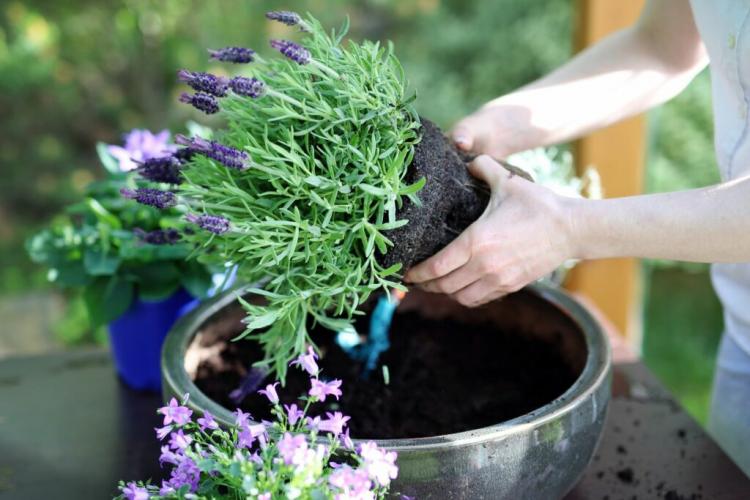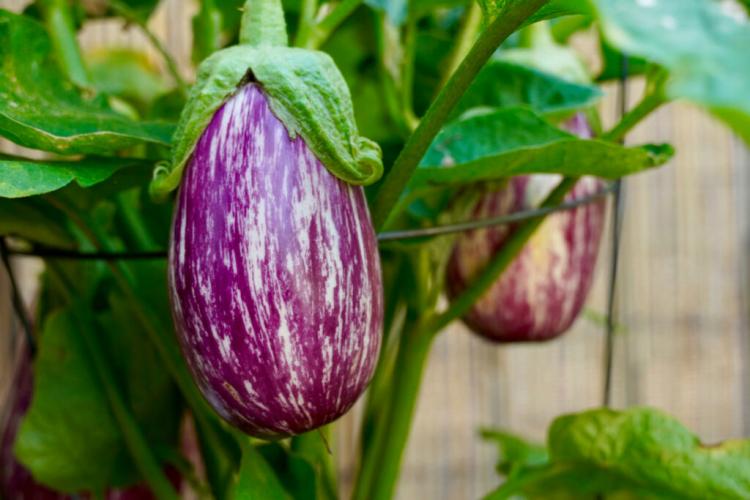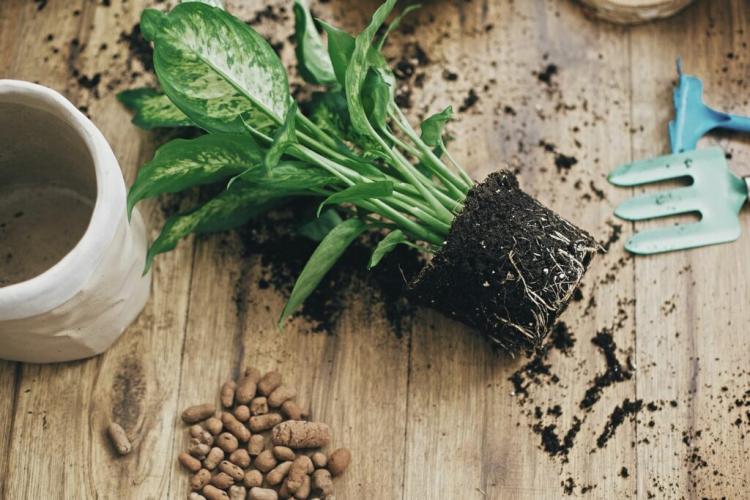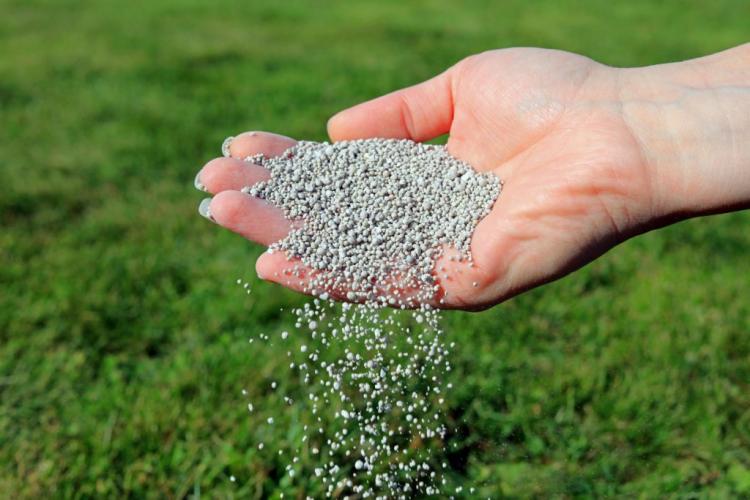Sowing and Fertilizing Lawns: Instructions & Care Tips
When planting a new lawn or reseeding it, the question arises whether fertilization can be carried out in parallel. We clarify whether you can sow and fertilize lawns at the same time.
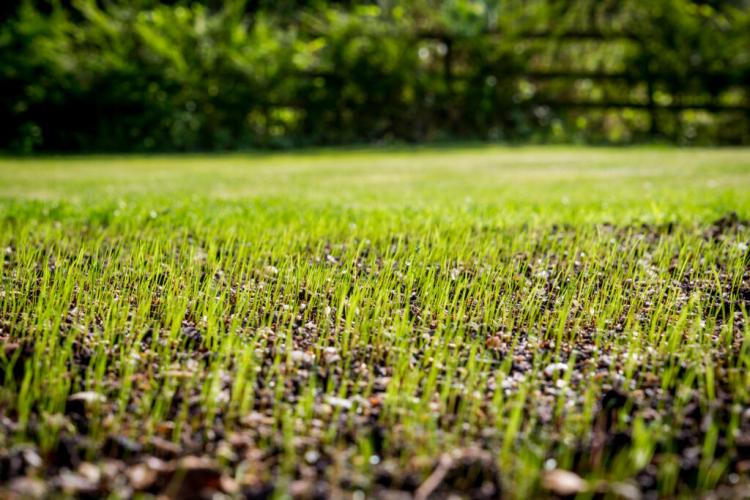
An even, healthy lawn can be achieved by sowing and fertilizing at the same time [Photo: NOPPHARAT STUDIO 969 / Shutterstock.com]
You were just about to reach for the fertilizer spreader – you notice that your lawn is growing and showing the density of a bald head? In this article you will find out whether sowing and fertilizing at the same time can quickly eliminate gaps in the lawn and restore vitality.
This article answers the question of whether you can sow a lawn at the same time or re-sow and fertilize. You will also find practical instructions on the sequence in which to do it. You can also find detailed information on creating new lawns in this special article.
Can you sow and fertilize lawns at the same time?
Table of Contents
Basically nothing speaks against fertilization and sowing or lawn reseeding at the same time. However, it should be noted that the fertilizer used is either largely organic or, if mineral, has a slow-flowing depot effect. Because young seedlings are very sensitive to high nutrient concentrations. In addition, they develop stronger roots when their roots have to search a little further for nutrients in the soil.
Instructions for sowing and fertilizing lawns in parallel
Only the months between May and September can be used for sowing lawn seeds. Later or earlier sowing can result in a shift in the grass composition due to cool temperatures and thus a devaluation of the lawn area that is created later. Below you will find step-by-step instructions for sowing and fertilizing for the first time, as well as for overseeding and fertilizing.
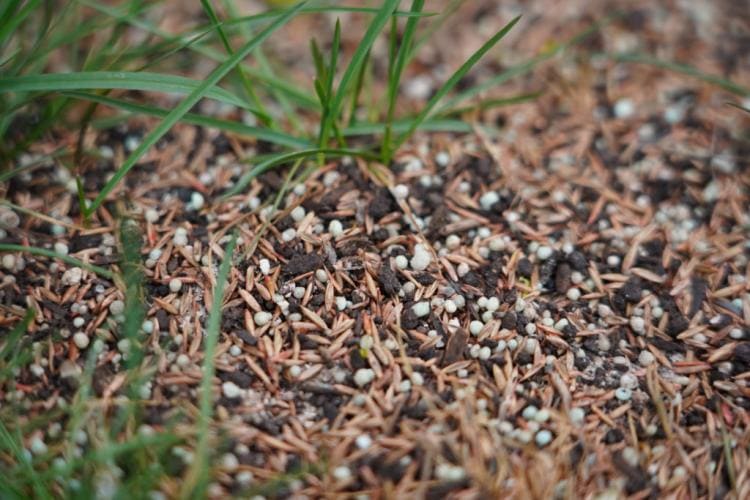
The right amount of fertilizer and seed is extremely important [Photo: MaroulisPhotography / Shutterstock.com]
Tip: In the case of many soils, an improvement in the structure of the soil can promote the growth of the lawn later. The introduction of manure, compost as fertilizer, bark humus, wood fibers or – if there is enough time – the use of green manure loosen the soil and improve its properties. Very heavy soils should be mixed with sand, lava grit or expanded clay. Approximately 4 to 5 m³ are worked in evenly per 100 m².
Fertilize and sow at the same time
If you want to create a new lawn and at the same time supply the soil with fertilizer, proceed as follows.
Instructions: Fertilize and sow the lawn at the same time
- Clear the future lawn of debris and larger stones
- Loosen the soil with a milling cutter or digging fork at least 10 cm, better 10 to 20 cm deep. You should remove root weeds
- Now work a basic fertilizer into the top 5 cm: For example 100 g / m² of our Plantura organic lawn fertilizer
- Create the rough subgrade, i.e. roughly smooth and model the surface with a wooden rake
- Lightly roll the surface, small surfaces can be stepped on with footboards (gentle consolidation is important to prevent later subsidence and the resulting hollows in the surface)
- Create the fine subgrade, i.e. level the surface as smoothly as possible, the substrate is worked flush with the edges of beds, surfaces or paths and also lightly consolidates there
- Now the sowing of the lawn seeds follows:
- Weigh the amount of seed required for the area according to the instructions on the package and divide it into two halves
- Go over the entire area and spread half of the seeds in several lanes
- Again and this time go across the area and distribute the second half of the seeds in the same way
- Work in the seeds with a wooden rake or hedgehog roller 0.5 to 1 cm deep
- Roll or kick the lawn one last time to create the ground contact
- Keep the area moist by watering until the seeds have emerged completely after about three weeks, watering not too often, but thoroughly without puddling; The water for irrigation should not hit the surface in thick drops, but rather be distributed quite finely by a nozzle or a sprinkler
Tip: The first cut is made at a height of 6 to 10 cm and at a cutting height of 4 cm. Ideally, the area is lightly rolled after the first cuts in order to press down the grass roots that have been plucked out during the mowing.
Fertilize and re-sow at the same time
Sometimes lawns also need reseeding for regeneration – for example if there are gaps or after intensive scarifying. We recommend Plantura lawn reseeding, with which existing lawns can be repaired quickly and reliably. At the same time you can fertilize.
Instructions: Fertilize and re-sow the lawn at the same time
- Mow the lawn very deeply – less than 2 cm in length
- If necessary, scarify the lawn and then remove any material that has been excavated
- If aeration is to be carried out, it is now the right time for this too
- Then the earth cones that have been created are removed and the surface is evenly sanded with 3 to 5 l / m² of fine sand
- Now 20 to 30 g / m² lawn seed – for example Plantura lawn overseed – are sown (as described above)
- Work the seeds in with a wooden or metal rake or cover them with a thin layer of soil
- Lightly roll the surface or consolidate it with running boards
- Now is fertilized – for example with 40 to 70 g / m² of our Plantura organic lawn fertilizer
- Water the area as described above and do not step on it again until the sward is tightly closed (after about six to eight weeks)
Tip: A soil sample can be taken for a soil analysis in advance. In this way you can fertilize as needed and you will also find out the pH value of your soil. The range between 6.5 and 7.2 is ideal for lawns. If you have to lime the soil to achieve this value, you should do so at a distance from the actual lawn sowing and fertilization. Here you can read more about fertilizing and liming the lawn at the same time.

So that your lawn grows nice and dense, you should sow the lawn seeds crosswise

